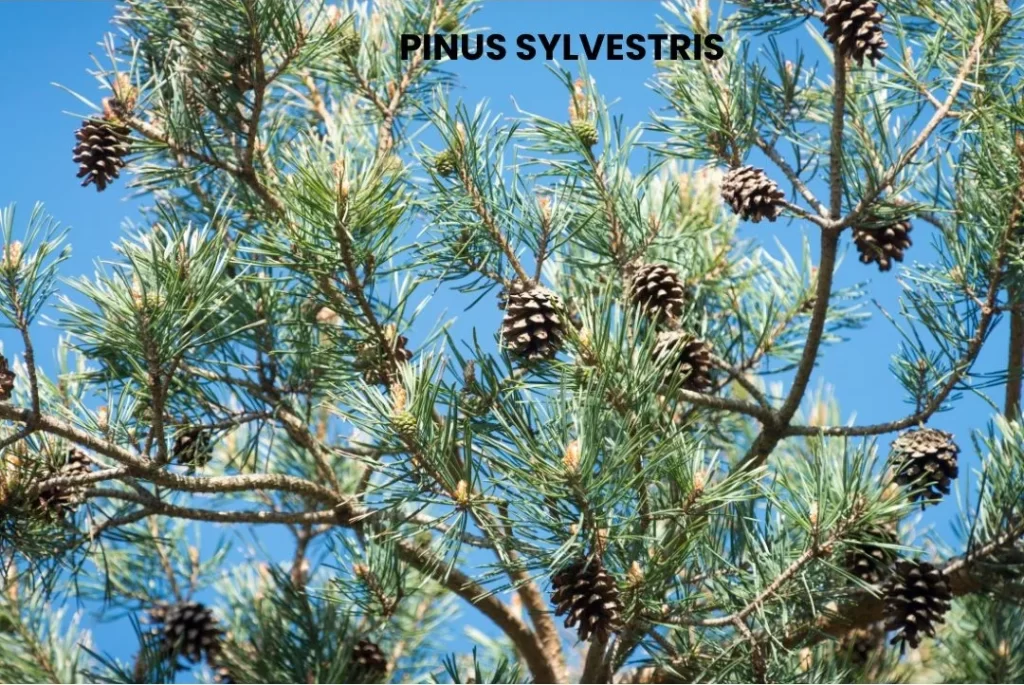Pinus Sylvestris, commonly known as Scotch Pine, is a homeopathic remedy known for its therapeutic effects on various conditions, particularly those affecting the musculoskeletal system, respiratory system, and skin.
It is especially beneficial for weak ankles, delayed walking in children with scrofula and rickets, and conditions where there is emaciation of the lower extremities.

Table of Contents
ToggleSOURCE INFORMATION
Scientific Classification
- Kingdom: Plantae
- Order: Pinales
- Family: Pinaceae
- Genus: Pinus
- Species: Pinus sylvestris
Origin and Historical Facts
- Origin: Native to Europe and Asia, Scotch Pine is a coniferous tree with distinctive long needles and cones.
- Historical Usage: Historically, various parts of Scotch Pine have been used in traditional medicine. In homeopathy, it is primarily used for its effects on rheumatic conditions, respiratory ailments, and skin disorders.
DRUG PATHOGENESIS
Pinus Sylvestris affects multiple systems in the body:
- Musculoskeletal System: Addresses weakness in ankles, stiffness, and gouty pains in joints, particularly the fingers and calves.
- Respiratory System: Helpful in bronchial conditions, characterized by thin chest sensation and weakness.
- Skin: Alleviates itching, especially around joints and abdomen, and treats nettle-rash.
KEY CHARACTERISTICS
- Extremities: Stiffness and gouty pains in joints, especially finger joints. Cramps in calves are also notable.
- Skin: Itching around joints and abdomen, nettle-rash, and itching nose are common symptoms.
- Respiratory System: Thin chest sensation, weakness, and bronchial symptoms.
- Musculoskeletal System: Weak ankles and delayed walking in scrofulous and rachitic children. Emaciation of lower extremities.
DETAILED ORGAN SYMPTOMS
EXTREMITIES
- Stiffness: Particularly noted with gouty pains in all joints, especially the fingers.
- Cramps: Cramping sensation in calves.
SKIN
- Itching: Predominantly around joints and abdomen. Nose itching may also occur. Nettle-rash is another symptom treated by Pinus Sylvestris.
RESPIRATORY SYSTEM
- Symptoms: Thin chest sensation, weakness, and involvement in bronchial conditions.
MUSCULOSKELETAL SYSTEM
- Weak Ankles: Effective in treating weakness and delayed walking in scrofulous and rachitic children.
- Emaciation: Particularly noted in the lower extremities.
RELATIONSHIP WITH OTHER DRUGS
Compare with,
- Pinus Lambertina (Sugar Pine): Known for constipation, amenorrhea, and abortion.
- Abies Canadensis (Canadian Spruce): Similarities in therapeutic action.
- Abies nigra (Black Spruce): Comparative effects in homeopathic treatment.
DOSE
- Potency: Tincture to third potency.
Frequently Asked Questions
What is Pinus Sylvestris used for?
- It is primarily used for weak ankles, musculoskeletal stiffness and pains, respiratory issues involving thin chest sensation, and various skin disorders such as itching and nettle-rash.
Is Pinus Sylvestris safe to use?
- When used in appropriate homeopathic potencies, Pinus Sylvestris is generally safe.
- It is advisable to consult with a qualified homeopathic practitioner for proper dosage and administration.
What are the side effects of Pinus Sylvestris?
- Side effects are rare when used according to homeopathic principles.
- However, improper use or overdose may lead to temporary aggravation of symptoms.
Glossary of Difficult Words
- Scrofula: A form of tuberculosis affecting the lymph nodes, especially of the neck, in children.
- Rickets: A condition characterized by softening and weakening of bones due to deficiency of vitamin D, calcium, or phosphate.
- Gouty: Related to or affected by gout, a type of arthritis characterized by severe pain, redness, and tenderness in joints.
- Nettle-rash: A skin condition characterized by reddish, itchy welts or hives.
